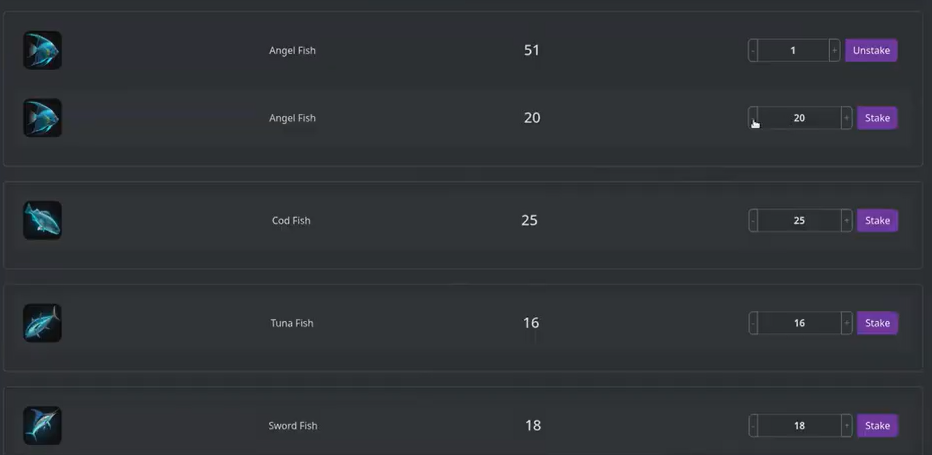1. Introduction: Chrysalis Revolutionizes the Fisheries Sector with RWA Tokenization
Chrysalis is taking bold steps toward revolutionizing the fisheries industry by introducing the first-ever Real World Asset (RWA) tokenization project within the sector. This innovative move will allow fisheries to leverage blockchain technology to bring more sustainability and transparency to an industry that faces numerous challenges, including overfishing and inefficient resource management.
By focusing on fisheries, Chrysalis has identified a sector in need of innovation and transparency. Tokenizing fisheries means converting physical assets—such as fish stocks, fishing equipment, and even the fishing vessels—into digital tokens on a blockchain. This opens up a wealth of new opportunities for investors, enhances resource management, and increases the sustainability of global fisheries.
The project’s pioneering nature makes it a major step forward in the world of blockchain and sustainable industries, and Chrysalis is positioning itself as a leader in this important new frontier.
2. Understanding Real World Asset Tokenization and Its Potential in Fisheries
RWA tokenization refers to the process of converting tangible, real-world assets into digital representations that can be managed, traded, and invested in using blockchain technology. In the case of fisheries, this means tokenizing everything from fish stocks to equipment, creating a digital marketplace for these assets.
The fisheries industry is a prime candidate for tokenization because of its need for improved resource management and transparency. Blockchain ensures that every step in the fishing process is recorded and easily traceable, reducing the risk of overfishing and allowing for better compliance with sustainability standards.
The transparency offered by blockchain will also increase trust in the industry. Consumers, businesses, and regulators will be able to track where their seafood is coming from, how it was caught, and whether the fishing methods are sustainable. This transparency can help restore public confidence in fisheries and encourage more responsible practices.
3. Chrysalis’ Approach to Tokenizing Fisheries: A Technological Leap
Chrysalis has adopted a highly strategic approach to its tokenization project. By partnering with cutting-edge blockchain infrastructure providers, they are ensuring the technological backbone of the project is robust, secure, and scalable. The platform will be designed to handle a large number of transactions while maintaining data integrity and security.
The tokenization process itself begins by assessing the value of the assets in the fisheries sector. Once these assets are assessed, they are converted into digital tokens on a blockchain platform. Each token represents a stake in the fishery’s resources, whether that be fish stocks, equipment, or operational ownership.
Blockchain technology plays a pivotal role in ensuring that all transactions are secure and transparent. It removes intermediaries and creates a direct link between asset owners and investors. This transparency ensures that both regulatory compliance and market access are improved, resulting in a more efficient and fair system.
4. The Environmental and Financial Benefits of Tokenizing Fisheries
Tokenizing fisheries has significant environmental and financial benefits. On the environmental side, blockchain technology will enhance the ability to track fish stocks, monitor fishing activities, and ensure that sustainable fishing practices are followed. By implementing a transparent system, overfishing can be minimized, and resources can be managed more effectively.
In terms of financial benefits, tokenization opens up new opportunities for investment. Smaller fisheries, often overlooked by traditional financial systems, can now access capital markets through the issuance of tokens. Investors can now buy and trade tokens representing shares in fisheries, allowing them to benefit from the growth of the sector while ensuring that the fishing operations remain sustainable.
The combination of blockchain and tokenization creates an efficient, scalable financial ecosystem for fisheries that can support sustainable practices while fostering economic growth.
5. Expanding Beyond Fisheries: Chrysalis’ Vision for the Future of Tokenization
Chrysalis’ tokenization project in the fisheries sector is just the beginning. While the focus is currently on fisheries, the technology and approach used by Chrysalis can be applied to a wide variety of industries. From agriculture to natural resources, any sector that relies on physical assets can benefit from the transparency and liquidity provided by blockchain technology.
Chrysalis has already outlined plans to expand its RWA tokenization model to other industries, ensuring that businesses worldwide can tap into the growing world of tokenized assets. By embracing this model, Chrysalis aims to lead a global shift in how businesses interact with technology, sustainability, and financial systems.
The future of tokenization is bright, and Chrysalis is at the forefront of this revolution.
6. Conclusion: A Bright Future for Tokenized Fisheries and Blockchain Solutions
Chrysalis’ RWA tokenization project marks a significant moment for both the fisheries industry and the world of blockchain. By applying blockchain technology to the fisheries sector, Chrysalis is making the industry more sustainable, transparent, and financially viable.
This innovative initiative could reshape the future of fishing by ensuring better resource management, reducing overfishing, and creating new financial opportunities for fisheries around the world.



